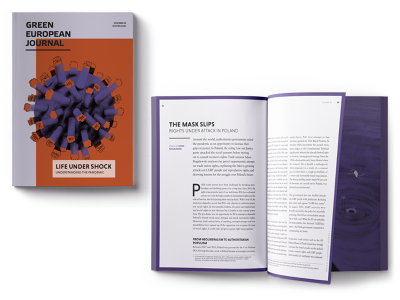As many countries in Europe went into lockdown, Sweden opted for little restrictions on public life. Anders Schröder weighs in on the merits and cost of this lonely route.
Living in London during the pandemic, I, like every other Londoner, dealt with the new reality of lockdown: queues for groceries, empty streets, boredom, and face masks. Returning to my hometown Stockholm in July, the contrast could not have been starker. The Swedish policy of relative openness has become famous or infamous depending on who you ask. No face masks, no lockdown, no closing of non-essential shops. Only a rule limiting gatherings to 50 people, the closure of high schools (not primary or middle schools), and a recommendation to work from home.

The policy has made strange bedfellows, earning the Swedish Social Democrat and Green government praise from US Republicans and other actors far to the right. Within the Swedish context, however, the decision never became politicised since the strategy was proposed by the public health authority. Within Swedish discourse, listening to the experts was considered as the most responsible way forward, while politicians in neighbouring countries were seen as overreacting. This view was shared by everyone from the Greens to the Conservatives.
How has Sweden’s openness fared? The jury still seems to be out. The worst fears were not realised. In early March, a virologist feared 50 000 deaths in Sweden. Currently, the number stands at 5900 (close to 600 per million). This is still far higher than in other Nordic countries who opted for a lockdown. Then again, countries such as Belgium and the Netherlands who introduced strict lockdowns ended up with higher per capita mortality figures than Sweden.
A progressive pandemic response needs to recognise that openness may have benefited a large majority, while coming at a price for marginalised groups.
Rather than just talking about openness versus lockdown, more nuance is needed. When it comes to keeping schools open, the Swedish experience seems to have been successful. A joint study conducted by the Finnish and Swedish public health authorities comparing Finland’s school closures to Sweden’s non- closure found that closing schools had no effect on the spread of the virus and Swedish teachers were not overrepresented among reported cases. Given that over a billion children worldwide are estimated to have lost school time – most severely affecting children belonging to marginalised groups – this should be huge news. How can we ask the world’s young to make this kind of sacrifice when the effect on spread is marginal at best (or even counterproductive, as the Norwegian public health authority feared)?
Other aspects of Sweden’s openness were less successful. While the middle classes have escaped relatively unscathed, poorer immigrant communities are among those particularly hard hit by the virus. Since many were exposed through work and live with large families in small apartments, social distancing has often been impossible to follow, leading to significantly higher death rates. A progressive pandemic response needs to recognise that openness may have benefited a large majority, while coming at a price for marginalised groups. And at the same time, it should be remembered that some policies introduced globally – such as primary school closures and border closures – still lack clear evidence regarding their impact.

